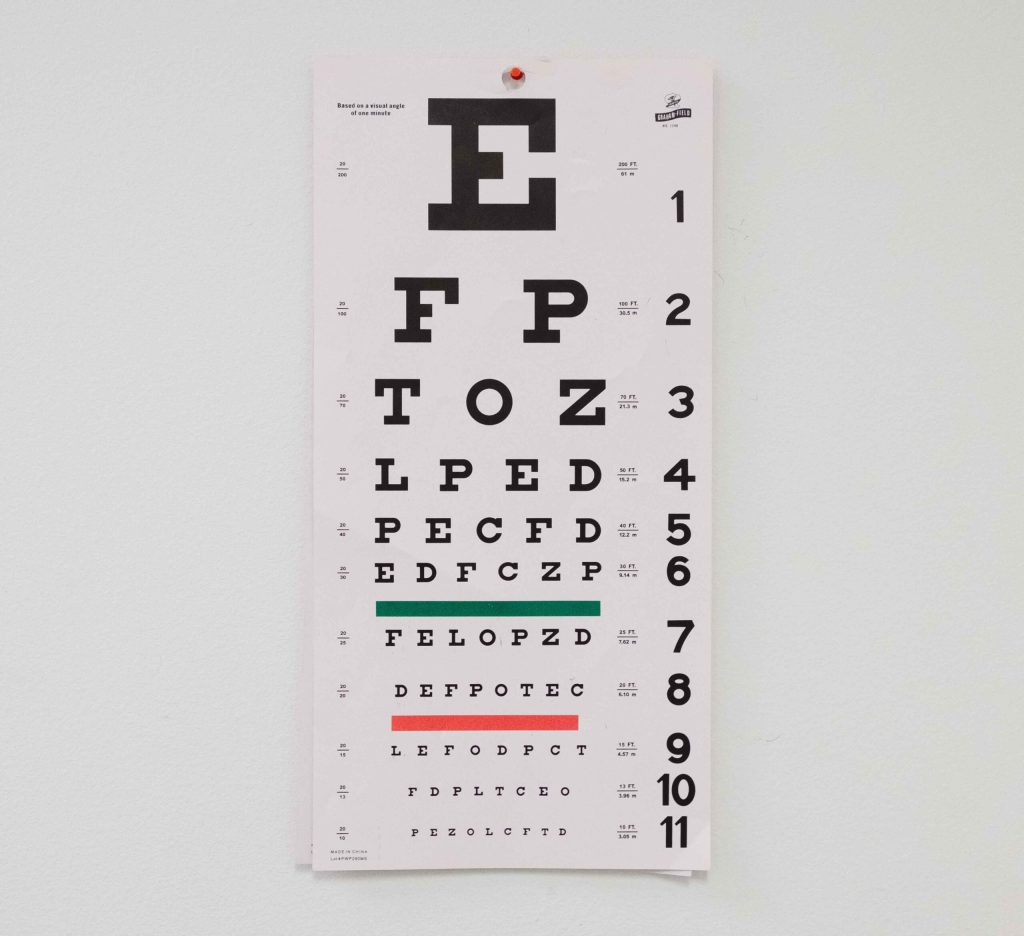It is advisable to go for a routine visual examination at least once a year, except for those who suffer from some type of pathology and have a specially indicated frequency of review.It is usual that, in these visits, if we need correction glasses, the optometrist writes us a prescription. We teach you how to easily interpret all those symbols that seem indecipherable.
¿Para qué sirve una receta optométrica?
An optometric prescription contains the necessary indications so that the optician can perform some prescription glasses, with the necessary correction so that with them we can achieve the highest possible visual acuity.
Visual acuity is the ability of our visual system to clearly discriminate and identify visual stimuli in good lighting conditions and at certain distances.
The function, then, of the prescription lenses will be to correct refractive errors such as myopia (when I can't see well from afar), farsightedness (I see nearby objects blurred), astigmatism (two focal points that affect my near and far vision) and presbyopia (difficulty seeing well up close that appears naturally with age).

We will start by understanding the abbreviations of the recipe
In your recipe you will find the following abbreviations. We tell you the meaning of each of them:
- OD: Right eye
- OS: Left eye
- Sphere: diopters that if preceded by a minus sign (-) refers to myopia and preceded by a positive sign (+) to hyperopia.
- Cylinder: astigmatism diopters, negative or positive (- or +).
- Axis:position of astigmatism, is expressed in values between 0º and 180º
- ADD: diopters to add to the graduation in VL -Far Vision-, due to presbyopia and is always expressed with a positive sign (+) in front.
- Prism and Base: amount and direction of strabismus.
It is important to remember that diopter is a unit of measurement used to express the power of a lens, its refractive capacity. It is also the unit of measurement used to express the amount of correction an eye requires.suffering from a refractive defect.
Reading a glasses prescription

- SPHERE. We will first find the value of the sphere. This will be telling us how much power the spherical lenses need to correct a myopia or hyperopia problem. As we said, if it is expressed with a negative sign it refers to myopia and when the positive sign precedes it, it refers to hyperopia
- CYLINDER AND AXIS. We will explain these values together because they both concern the correctness of the astigmatism. The cylinder is expressed in diopters (with positive or negative value) and has to do with the power required by the lens for correction, while the axis is expressed in degrees indicating the orientation in which the toric lens should be placed in relation to the eye.
- ADDITION. In the case of presbyopia, the degree of lens power required for correction of eyestrain will be indicated here. It is added to the distance correction and it is an always positive value, even if the sign (+) does not appear.
Other important values
It may happen that, in cases of phoria or strabismus, the optometrist or ophthalmologist also indicates two values that will serve to correct the muscle decompensation that causes it: Prism and base. Finally, the PD is the distance between the two centers of the pupils, we will find it expressed in millimeters.
The recipe formats can be very varied, but with this information you now have the key concepts with which you can easily interpret your recipe. Remember to visit a professional to check your vision, it is important in the care of your visual health.
Optometric Prescription FAQs
What is the meaning of the abbreviations of a prescription for glasses?
In an optometric prescription we will commonly find the following abbreviations: OD (right eye) - OS (left eye) - SPH (sphere) - CYL (cylinder) - AXIS (axis) - ADD (addition).
What are diopters?
A diopter is both a unit of measurement that is used to express the power of a lens, its refractive capacity, and it is also the unit of measurement used to express the amount of correction that an eye that suffers from a refractive error requires.
How often should I have my vision checked?
It is advisable at least once a year to go to a specialist to check our eyesight, except in those cases in which, due to suffering from a pathology, the doctor indicates a special frequency.
